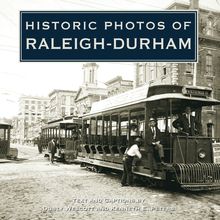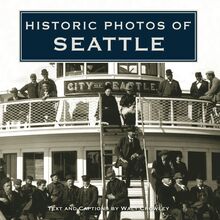Historic Photos of Omaha , livre ebook
197
pages
English
Ebooks
2007
Vous pourrez modifier la taille du texte de cet ouvrage
Obtenez un accès à la bibliothèque pour le consulter en ligne En savoir plus
Découvre YouScribe en t'inscrivant gratuitement
Découvre YouScribe en t'inscrivant gratuitement
197
pages
English
Ebooks
2007
Vous pourrez modifier la taille du texte de cet ouvrage
Obtenez un accès à la bibliothèque pour le consulter en ligne En savoir plus
Publié par
Date de parution
01 septembre 2007
Nombre de lectures
0
EAN13
9781618586629
Langue
English
Poids de l'ouvrage
5 Mo
From its beginnings as a frontier military post on the Missouri River, through its years as a transportation and meatpacking center, to its present role as a home to Fortune 500 companies, Omaha has always been a city of opportunity, growth, and change.
Historic Photos of Omaha captures this journey through still photography selected from the finest archives. In these pages are unique visual records of the city's history, presented in hundreds of historic photographs.
From the muddy streets of a cattle town to the bustling thoroughfares of a modern metropolis, these images tell a story of transportation and commerce, of churches and schools, of wars and disasters. Photographs of the great Trans-Mississippi and International Exposition and Indian Congress of 1898, Boys Town, city parks, neighborhoods, and the downtown of bygone eras are all here, preserved in striking black and white images that capture historic events and everyday life of a unique and vibrant city in the heart of America.
Publié par
Date de parution
01 septembre 2007
Nombre de lectures
0
EAN13
9781618586629
Langue
English
Poids de l'ouvrage
5 Mo
HISTORIC PHOTOS OF
OMAHA
T EXT AND C APTIONS BY J EFFREY S PENCER
In this view west-northwest from 15th and Farnam streets in 1872, the new Omaha High School sits on the hilltop at upper right. It was completed that year at a total cost of $225,000. The old Douglas County Court House, built in 1857, is visible in the center foreground, and just above it is Redick s Opera House on the northwest corner of 16th and Farnam streets, built by real-estate investor John I. Redick in 1870.
HISTORIC PHOTOS OF
OMAHA
Turner Publishing Company
200 4th Avenue North Suite 950
Nashville, Tennessee 37219
(615) 255-2665
412 Broadway P.O. Box 3101
Paducah, Kentucky 42002-3101
(270) 443-0121
www.turnerpublishing.com
Historic Photos of Omaha
Copyright 2007 Turner Publishing Company
All rights reserved.
This book or any part thereof may not be reproduced or transmitted in any form or by any means, electronic or mechanical, including photocopying, recording, or by any information storage and retrieval system, without permission in writing from the publisher.
Library of Congress Control Number: 2007929601
ISBN-13: 978-1-59652-394-4
Printed in the United States of America
07 08 09 10 11 12 13 14-0 9 8 7 6 5 4 3 2 1
C ONTENTS
A CKNOWLEDGMENTS
P REFACE
F RONTIER ON THE M ISSOURI (1860-1890)
O MAHA C OMES OF A GE (1891-1900)
A N EW C ENTURY 1901-1920)
T HE G ATE C ITY (1921-1939)
R EACHING T OWARD THE F UTURE (1940-1969)
N OTES ON THE P HOTOGRAPHS
The Exposition Building and Grand Opera House, an enormous brick structure built between 14th and 15th streets on Capitol Avenue in 1886-87. Costing in excess of $50,000 when completed, it could hold more than 5,000 persons. Many large productions were held here, including the traveling company of the New York Metropolitan Opera. The structure was destroyed by fire on December 4, 1894.
A CKNOWLEDGMENTS
This volume, Historic Photos of Omaha , is the result of the cooperation and efforts of a number of organizations and individuals.
We would like to thank in particular the Durham Western Heritage Museum, the Omaha Public Library, and Joanne Ferguson Cavanaugh, librarian, Omaha Public Library
- Jeffrey Spencer, Author
This project represents countless hours of review and research. The researchers and writer have reviewed thousands of photographs. We greatly appreciate the generous assistance of the archives listed here, without whom this project could not have been completed.
The goal in publishing the work is to provide broader access to a set of extraordinary photographs. The aim is to inspire, provide perspective, and evoke insight that might assist officials and citizens, who together are responsible for determining Omaha s future. In addition, the book seeks to preserve the past with respect and reverence.
With the exception of touching up imperfections caused by the vicissitudes of time and cropping where necessary, no other changes have been made. The focus and clarity of many images is limited to the technology of the day and the skill of the photographer who captured them.
We encourage readers to reflect as they explore Omaha, stroll along its streets, or wander its neighborhoods. It is the publisher s hope that in making use of this work, longtime residents will learn something new and that new residents will gain a perspective on where Omaha has been, so that each can contribute to its future.
- Todd Bottorff, Publisher
P REFACE
The history of the settlement and subsequent development of Omaha is an extension of the history of the American West, from the explorations of Lewis and Clark to the Manifest Destiny movement of the mid-nineteenth century to the growth of railroads as the frontier pushed ever westward.
By July of 1804, the Corps of Discovery led by Lewis and Clark had reached the area where present-day Omaha is located. By 1820, the United States government had established its first permanent military post in the region, Fort Atkinson. Soon, settlers began moving into the area.
From 1845 until 1848, during the Mormon migration, the Winter Quarters site was established approximately six miles north of the later town site of Omaha. At one time, as many as 15,000 temporary residents lived there, resting along their journey to the basin of the Great Salt Lake. Many elected to stay here.
On December 14, 1853, Senator Augustus C. Dodge of Iowa introduced a bill in the United States Senate to organize the Territory of Nebraska. After much discussion and delay, this bill was finally ratified and signed into law by President Franklin Pierce on May 30, 1854. The next month, a treaty was ratified between the United States and the Otoe, Missouri and Omaha Indians, which gave land title in the area to the government and allowed for settlement to commence. On July 4, 1854, the first official gathering took place on what was to be the town site of Omaha, and many people consider this date to be the founding of the city. Immediately, large numbers of people began crossing the Missouri River from the Iowa side, and took up claims in what was then known as Omaha City.
By 1857, the new town boasted 1,700 residents, and the Nebraska Territorial Legislature granted a petition for the incorporation of Omaha as a city. That same year, a great financial panic took hold in the East, which halted the growth of the new town. Almost two-thirds of the residents moved away, and most banks and businesses went bankrupt. The discovery of gold in Colorado in 1859 breathed new life into the community as Omaha became an important supply station for those going west. In 1863, President Abraham Lincoln established the route of the transcontinental railroad through Omaha. From that point forward, the destiny of the community was assured.
Due to its central geographic location, and sitting beside the major inland waterway of the Missouri River, Omaha was poised to become an important trade and transportation center. This became more evident with the completion of the Union Pacific railroad in 1868. The decades of the 1870s and 1880s saw tremendous growth in the area. The temporary, pioneer atmosphere gave way to a community of substance and prosperity. Fine homes, schools and public buildings were constructed.
In 1893, the country was thrown into another serious financial depression. The Midwest was especially affected. After several years of bad weather, crop failures, and a general decline in market demand, the situation had become critical. Business leaders in the community began trying to devise a plan to revitalize the local economy. They decided to host a World s Fair in Omaha, to be held during the summer and fall of 1898. This became the Trans-Mississippi and International Exposition and Indian Congress. For the first time, international attention was focused on Omaha, and the community rose to the occasion. This was by far the most important and significant event which has taken place in Omaha.
By 1900, Omaha was moving forward into the new century with a population well in excess of 100,000. After the decline of the railroad, a new economic force began to emerge with the establishment of the adjacent community of South Omaha (a separate city) and the meatpacking and processing business. The Union Stockyards Company, established in 1883, eventually controlled 22 large packing companies and employed more than 30,000 workers. To fill those jobs, Omaha became a key destination for immigrants coming to America. Although Germans and Irish were the predominant groups, representatives from almost every country in Europe could be found living and working here.
The Omaha of today is moving forward in many significant ways. Commercial development is very active, with many large corporations establishing offices here. Two significant events occurred in 2004: The Lewis and Clark Bicentennial Commemoration and the Omaha 150th Birthday Sesquicentennial Celebration. Now, we are moving ahead into the twenty-first century.
Omaha is fortunate to possess a very extensive visual archive of its history and development. From those priceless resources, we have gathered the historic views presented in this collection. These photographic images open a window through which we can glimpse a view of Omaha as it grew and became the city it is today. We trust that you will enjoy looking at this collection as much as we have enjoyed putting it together and bringing it to you.
- Jeffrey Spencer
Plans were approved for the construction of a new Union Station at 10th and Mason street in 1929. Noted Los Angeles architect Gilbert Stanley Underwood received the commission. When completed early in 1931 at a cost of $3.5 million, it was considered one of the finest examples of art deco architecture in the country. This is the new depot as it appeared in January 1931.
F RONTIER ON THE M ISSOURI
(1860-1890)
Nebraska; may her gentle zephyrs and rolling prairies invite pioneers from the muddy Missouri River to happy homes, and may her lands ever be dedicated to free soil, free labor and free men. John Gillespie, who would serve as territorial auditor 1865-67 and state auditor 1867-73, offered this toast at the first gathering of settlers on the town site of Omaha, July 4, 1854. This event marked the true beginning of the city.
The site had been surveyed and platted the previous month, and lots were to be offered by the town company for $25 each. The company had also agreed to deed lots to any person who was willing to construct a building at once. Settlement moved quickly after the ratification of the treaty with the Omaha Indians, and within a short time most of the land between the Missouri and Elkhorn rivers had been claimed.
Although there is speculation as to who actually proposed the name of the new community, there is general agreement as to its meaning. The name Omaha was derived from the Indian tribe that occupied the town site prior to settlement. The actual meaning of the n














